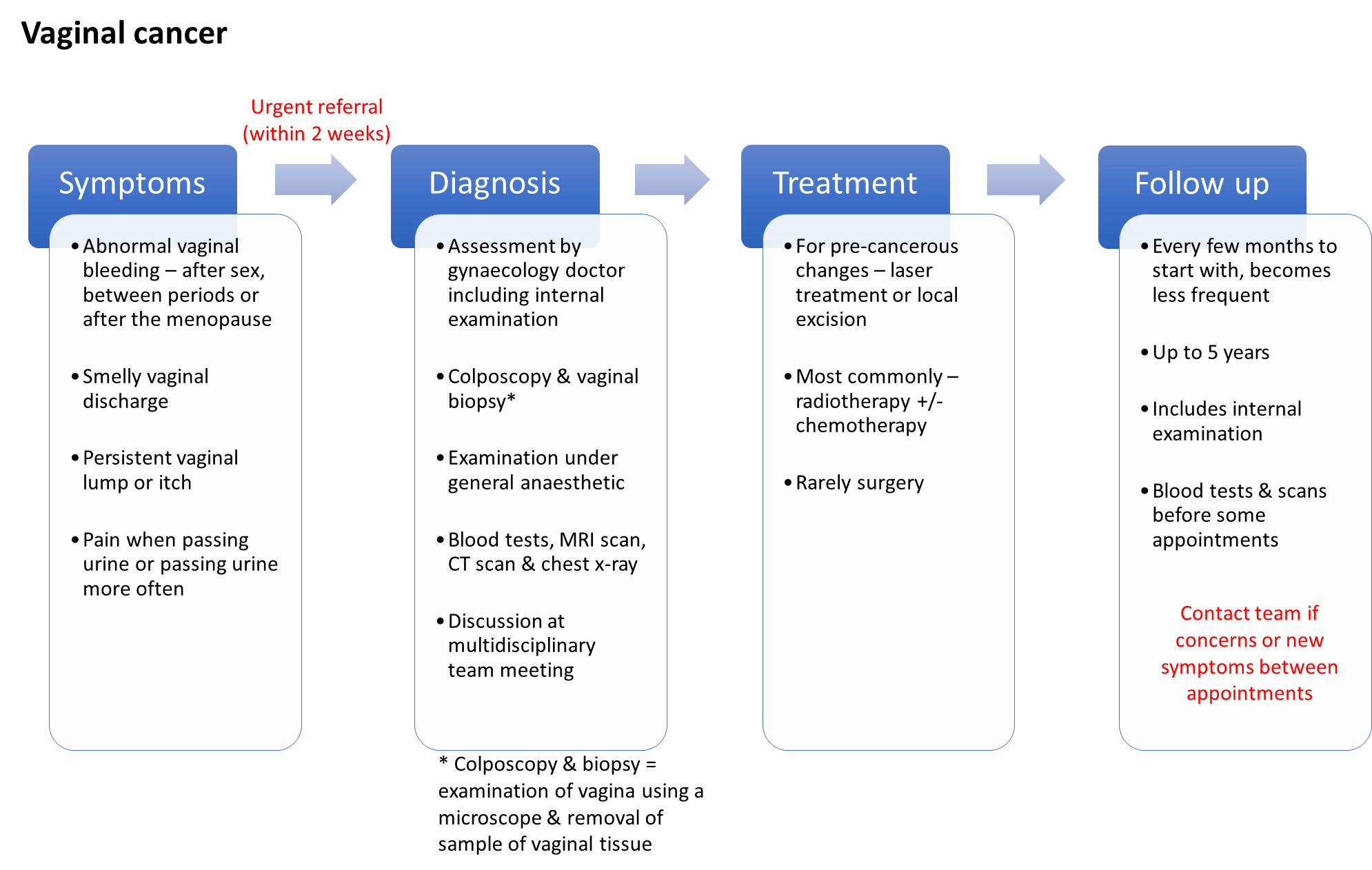Gynaecology Cancer
What are gynaecological cancers?
'Gynaecological cancer' refers to the five cancers that start in a woman's reproductive system – womb, ovarian, cervical, vulval and vaginal.
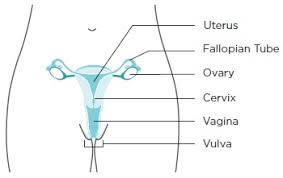
Women's reproductive system
The symptoms, diagnosis and treatment depend on the type of cancer, as outlined in each of the following sections. Further information can be found via the online resources in the 'useful links' section.
Womb Cancer
Womb cancer is the most common gynaecological cancer with approximately 9,500 new cases in the UK each year. Womb cancer may also be called uterine or endometrial cancer; the endometrium is the lining of the womb where most womb cancers start.
The diagram below illustrates the potential symptoms, investigations used to help diagnose the cancer, possible treatment options and the usual follow up.
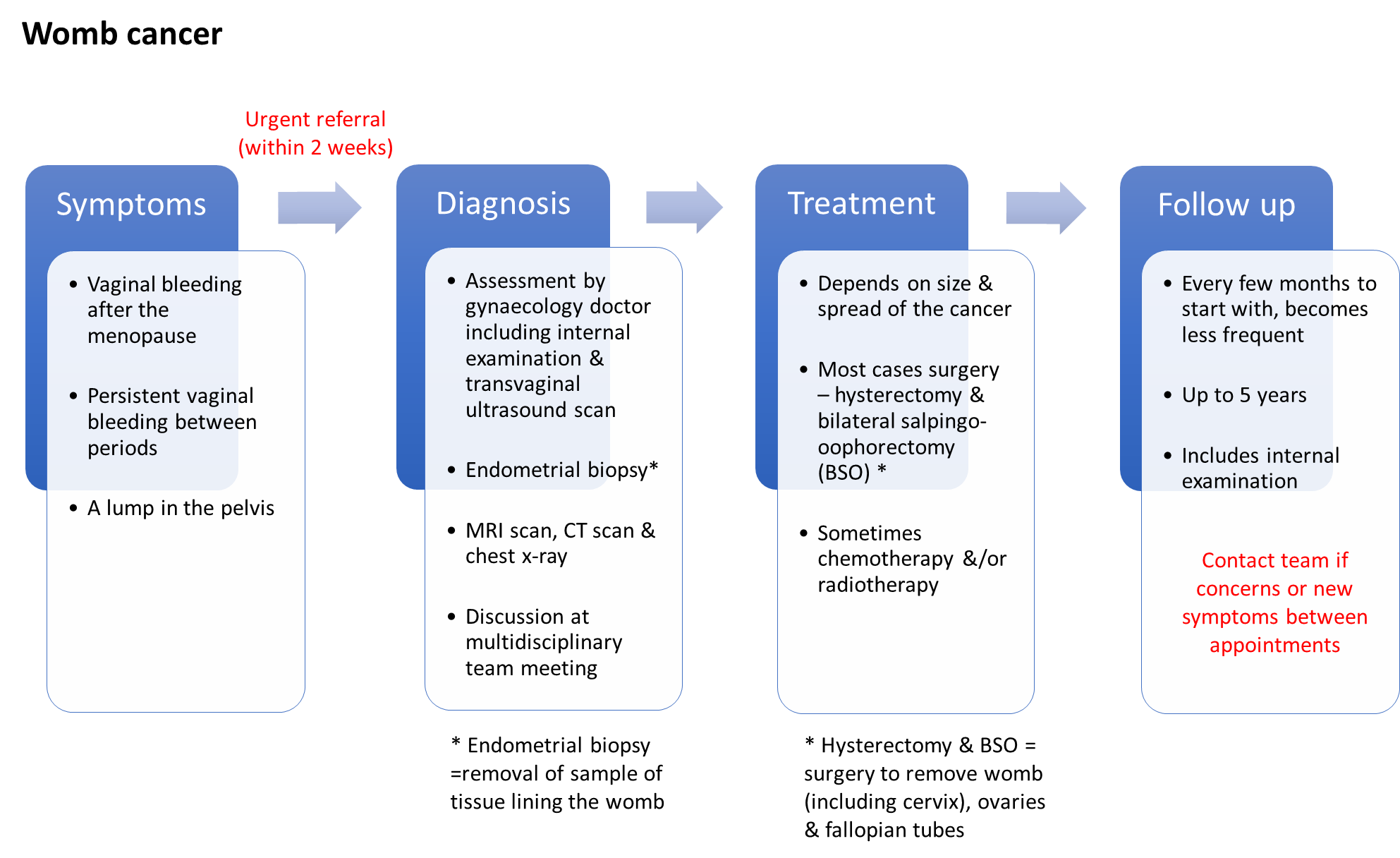
Ovarian Cancer
Ovarian cancer is the second most common gynaecological cancer– around 7,500 women are diagnosed in the UK each year.
The diagram below illustrates the potential symptoms, investigations used to help diagnose the cancer, possible treatment options and the usual follow up.
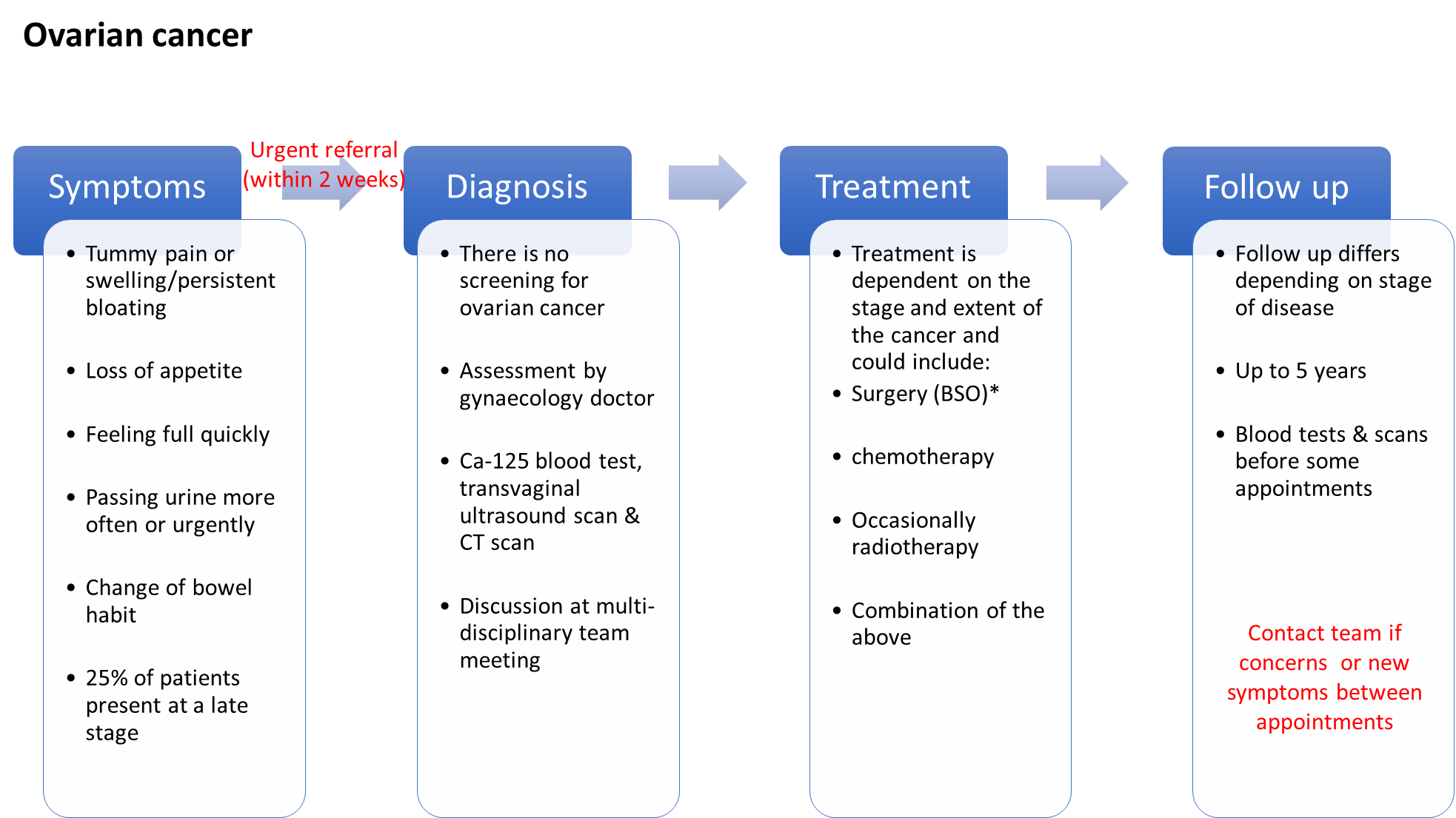
Cervical cancer
Cervical cancer is the third most common gynaecological cancer in the UK - around 3,200 women are diagnosed each year.
It mainly affects sexually active women aged between 30 and 45.
Almost all cases are caused by infection with some types of the human papilloma virus (HPV). It may be possible to reduce your risk by practicing safe sex, attending appointments for cervical screening and stopping smoking. The HPV vaccine, now part of the routine childhood immunisation programme, may also reduce the chance of developing cervical cancer.
The diagram below illustrates the potential symptoms, investigations used to help diagnose the cancer, possible treatment options and the usual follow up.
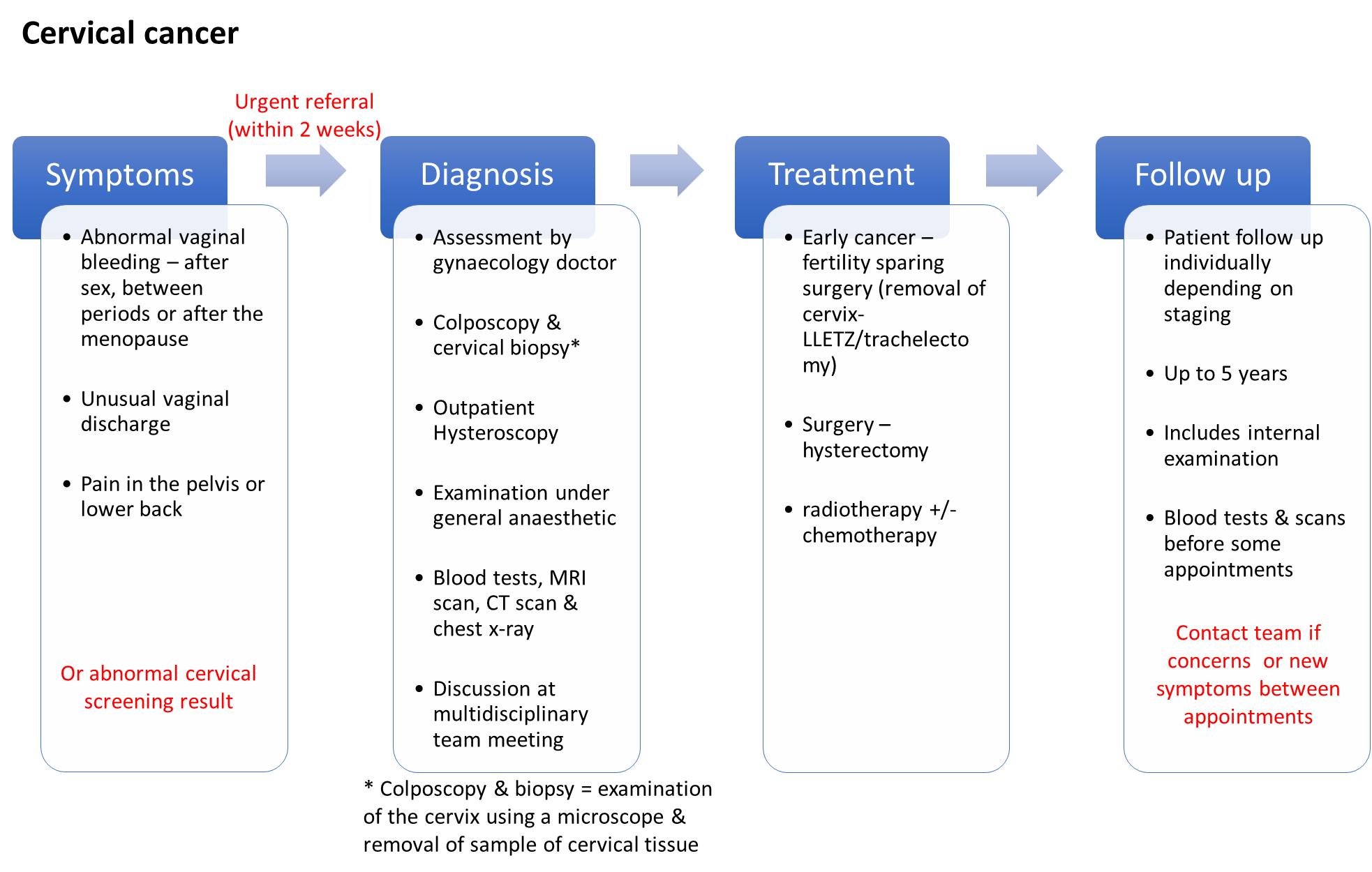
Vulval Cancer
Cancer of the vulva is rare – around 1,300 women are diagnosed in the UK each year. It can start in any part of the female external genitalia (the vulva) but most commonly it affects the inner or outer lips.
Most cases are in women over the age of 65.
Around 50% of vulval cancers are caused by infection with some types of the human papilloma virus (HPV). It may be possible to reduce your risk by practicing safe sex, attending appointments for cervical screening and stopping smoking. The HPV vaccine, now part of the routine childhood immunisation programme, may also reduce the chance of developing vulval cancer.
The diagram below illustrates the potential symptoms, investigations used to help diagnose the cancer, possible treatment options and the usual follow up.
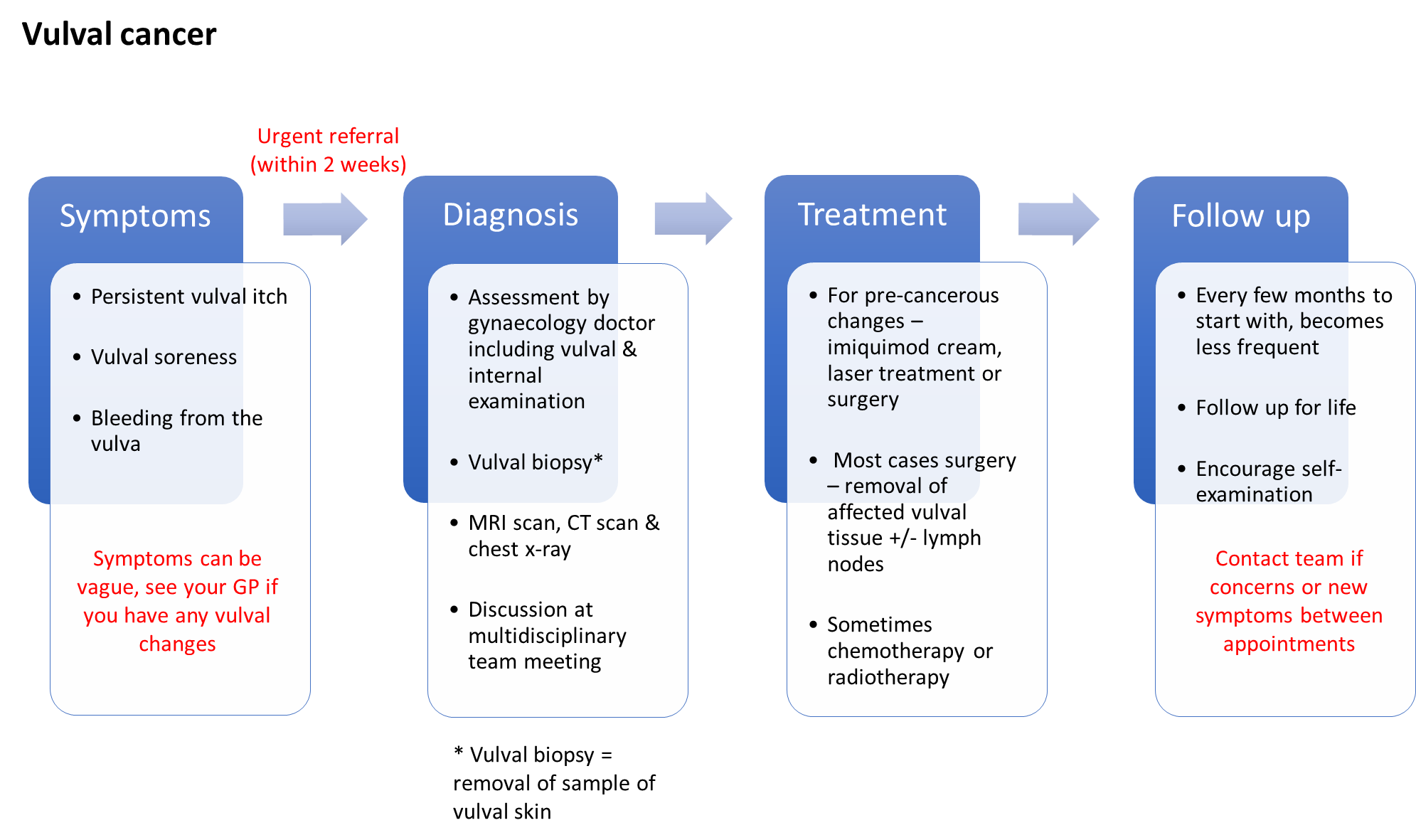
Vaginal Cancer
Vaginal cancers are rare – less than 300 women are diagnosed with this type of cancer in the UK each year. It is more common for cancer to start in an area nearby, such as the cervix or womb, and spread in to the vagina.
Most cases are caused by infection with some types of the human papilloma virus (HPV. It may be possible to reduce your risk by practicing safe sex, attending appointments for cervical screening and stopping smoking. The HPV vaccine, now part of the routine childhood immunisation programme, may also reduce the chance of developing vaginal cancer.
The diagram below illustrates the potential symptoms, investigations used to help diagnose the cancer, possible treatment options and the usual follow up.
